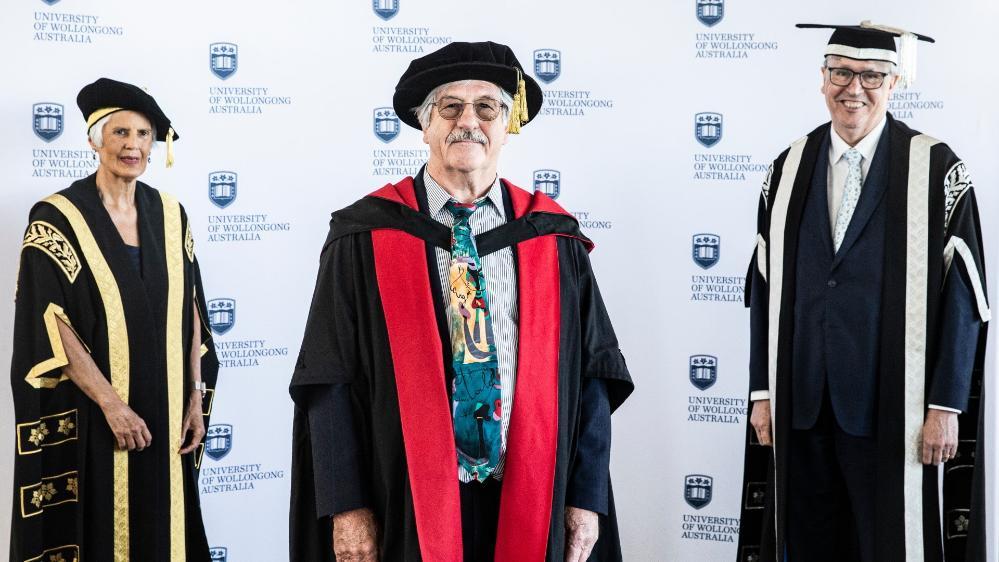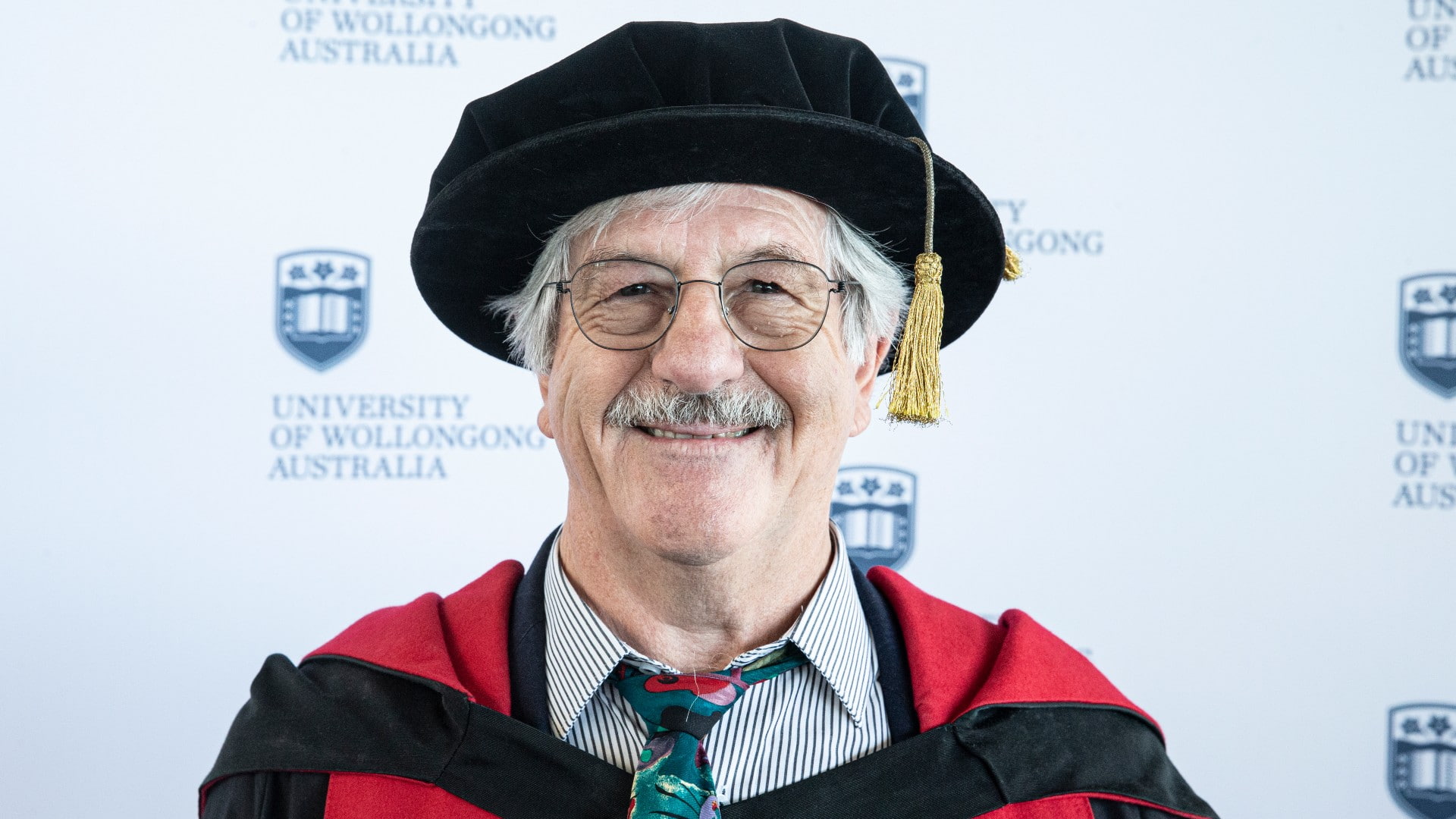December 9, 2020
Man of steel steps back after a distinguished career
Professor Rian Dippenaar a world-class researcher and teacher who bridged divide between academia and industry
When Professor Rian Dippenaar was deciding when to retire, 2 July 2020 seemed like a good date to make the leap.
In addition to being his last day of work, it was his wedding anniversary – 54 years – making the occasion even more auspicious.
“I retired at 77 and a half,” Professor Dippenaar said with a laugh. “I had planned on working until I was 80 but that was a bit optimistic. The energy is not quite what it was.”
Yesterday (Tuesday 8 December), Professor Dippenaar capped off his career with an Emeritus Professorship from the University of Wollongong, during a conferral ceremony at Innovation Campus.
“I was pretty naïve as I thought every professor who retires becomes an Emeritus Professor,” he said. “I was a bit taken back by all the fuss. But once I realised what an honour it was, I was very surprised. I’m not sure I deserve all the accolades.”
It was a typically humble approach from a world-class researcher who has gained a reputation for his passionate leadership and ability to bridge the divide between academia and industry.
Professor Dippenaar joined UOW in 1996 from his native South Africa, where he had earned a Bachelor of Science (Honours) and a Master of Science from the University of Pretoria, followed by a PhD from the University of Cambridge in the UK.
As a Professor of Steelmaking, he was recruited to UOW as the founding Director of the multi-disciplinary BHP Institute for Steel Processing and Products. From there, he became a valued and experienced member of UOW’s engineering faculty.
Professor Dippenaar has conducted research in support of new technological developments, and facilitated a large number of joint industry-university research projects in a variety of disciplines.
He helped to commission the first high-temperature laser-scanning confocal microscope outside Japan at UOW, and has since established a world-leading team using confocal microscopy for in situ, real time observation of high temperature phase transformations.

UOW Chancellor Elizabeth Magassy, Emeritus Professor Rian Dippenaar, and Vice-Chancellor Professor Paul Wellings. Photo: Paul Jones
For the past 20 years, Professor Dippenaar and his team have worked on solidification structures and solidification theory, mostly of steel and iron-nickel alloys.
It is Professor Dippenaar’s love of materials engineering that has continued to motivate him throughout his long and distinguished career.
“I’m an old-time metallurgist,” he said. “I think it’s the discipline that has kept me interested. I love working with industry. Without industry, there’s not much point in doing research. I’ve always liked to work with industry on the problems that industry is faced with. I always encourage my PhD students to work on industry-relevant topics.
“One and a half billion tonnes of steel are produced and used globally every year. The problems facing the industry are challenging and relevant.”
In addition to his research strengths, Professor Dippenaar became a popular and passionate lecturer at undergraduate and postgraduate levels.
It is a testament to his relationship with his PhD students that upon his retirement, students from all over the world joined a Zoom call to celebrate their supervisor.
“At my retirement, 17 of my 21 PhD students logged in to a Zoom meeting and gave me the most appropriate and beautiful memento. The fact that they valued my leadership is very special to me,” he said.
“On my retirement, my students collectively presented me with a polished slice from a meteorite, which was discovered in Russia, sliced and polished in the US and mounted in Sydney. The polished slice of the meteorite displays most beautifully, the very slowly cooled solidification structure of the meteorite, which consists of an iron-nickel alloy.
“It is a privilege to work with highly talented young people, who are self-motivated and willing to put the energy into their work.
“I’ve always believed that students are not only there to be technically trained, they are there to be educated about life. That was important to me. It has been very rewarding.”
Retirement for Professor Dippenaar does not involve giving up work altogether. He still has PhD students and is looking forward to maintaining his university connections, but at the same time, he has new interests he wants to pursue.
“I’m interested in photography, I want to travel a little bit, I want to relax. I’ll still be on the sidelines, but not to the extent that I was. I’ve done my bit,” he said.
“I’m sitting here, looking out at the ocean and the waves, and it’s just wonderful. I owe much thanks to the university and to [former UOW Vice-Chancellor] Gerard Sutton, who brought me to UOW in the first place. I highly value my most rewarding time in the University of Wollongong.”
